It’s All Hands on Deck for ‘Resilient Schools’
by Brenda Ortega
MEA Voice Editor
Jacob Blanton used to have trouble focusing in school. The soon-to-be Lincoln Park sixth grader remembers a few years ago when he would “get mad and stuff and keep on getting distracted,” but now he knows how to calm his anger and reset his brain so it doesn’t feel impossible to concentrate on classwork.
“I used to get in trouble and fights, but now I come here and it helps me,” the boy said after demonstrating how to use all of the equipment in the general-education sensory room at his elementary school—the place that has offered him saving grace.
It seems simple, but the youngster’s transformation resulted from a remarkably comprehensive shift in culture the Downriver district has been making over the past five years—a change now all the more urgent amid emotional struggles faced by educators and students alike in the pandemic’s wake.
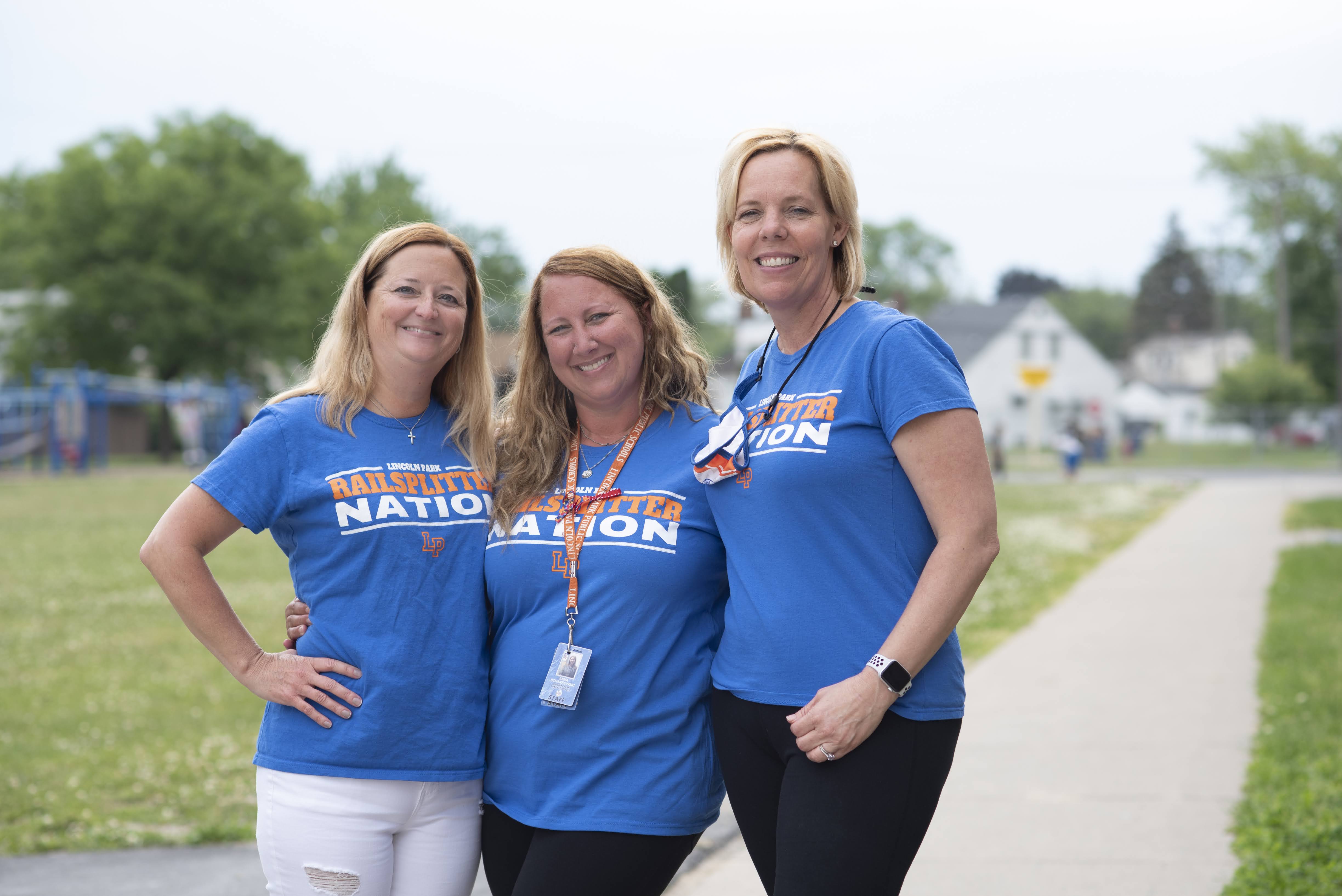
The Resilient Schools Project in Lincoln Park has brought trauma-informed practices to the forefront in every classroom in every building district-wide.
Even before COVID, more young children were showing up for kindergarten with visual-motor deficits and fine motor skill delays, says MEA member Kim Wagner, a 29-year school occupational therapist who changed districts to be part of launching the project.
Over the past decade, preschoolers are spending more time in front of screens and less time in the kind of unscheduled outdoor play known to develop motor skills along with social-emotional and executive functioning skills, Wagner said: “Things are so much different than they were 10, 15 years ago.”
Add in trauma from poverty, parental substance abuse, childhood abuse or neglect, and other stresses outside of school, and it’s a recipe for emotional dysregulation and behavior challenges, she said. Trauma changes how the brain functions, which in turn affects how a youngster behaves and learns.
“We know increasing movement increases the neurons firing in the brain, which means students are going to be able to focus better,” Wagner said. “Bringing movement back is my mission, but it’s specific movement.”
Joining forces with Wagner are two MEA member behavior specialists, both longtime school social workers who—like Wagner—moved districts to be able to work on a dream project they consider to be unprecedented in scope and scale in Michigan.
“I don’t know of a district that is doing this work at the level and intensity that we are,” said Angela Burley, one of the team’s two behavior specialists, now in her fourth year at Lincoln Park after working 16 years as a school social worker elsewhere.
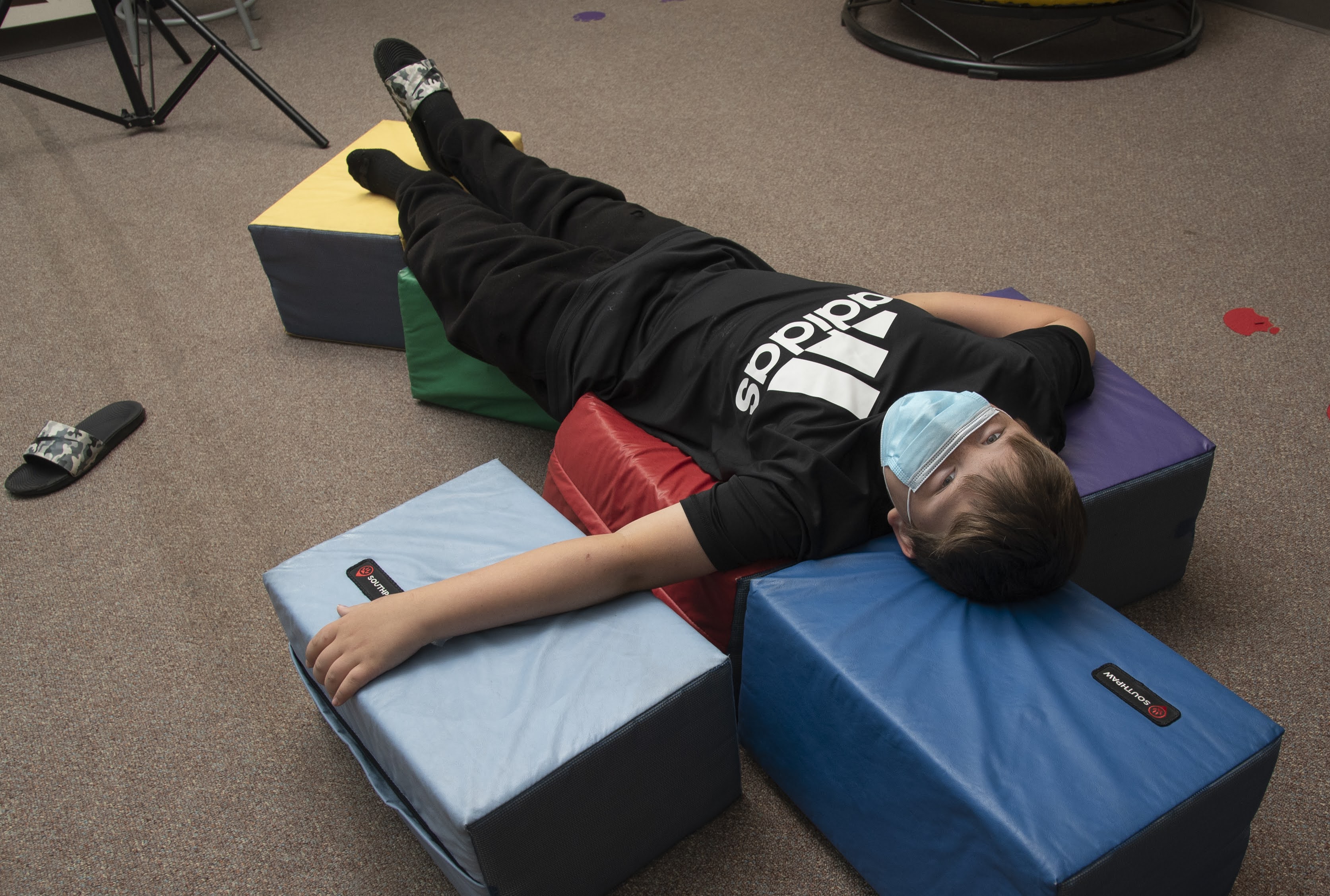
Together the trio makes up the district-level Behavior Support Team responsible for training building staff, modeling strategies, observing students and teachers in classrooms, assessing student needs, developing intervention plans, and conducting home visits.
For ongoing guidance and train-the-trainer services, the district partnered with Starr Global Learning Network—the professional development and coaching arm of Starr Commonwealth, an agency specializing in trauma and behavioral health headquartered in Albion.
In turn, the behavior support team leaders have not only trained other Lincoln Park staff, but the three have traveled to present to neighboring districts and at conferences.
“In any training, what you’ll hear me say again and again is that we’re going to get rid of the word ‘why,’” said Anna Schankowski, the other behavior specialist on the team, who was first of the three to move to join the project five years ago when it was being piloted at one school.
“We’re not going to ask a child why they’re behaving a certain way, because why is for science and research,” the 16-year school veteran said. “We are going to ask kids what is going on. It’s about stepping back and being curious, asking questions instead of making judgment.”
In addition to structured movement, the project incorporates mindfulness strategies and restorative practices for building resilience in the face of trauma. Teachers have been trained, and paraeducators in every building—known as advocates or coaches—also mentor students as they help to put various strategies into action.
“The investment of time up front in these practices pays back a hundred times later,” Schankowski said.
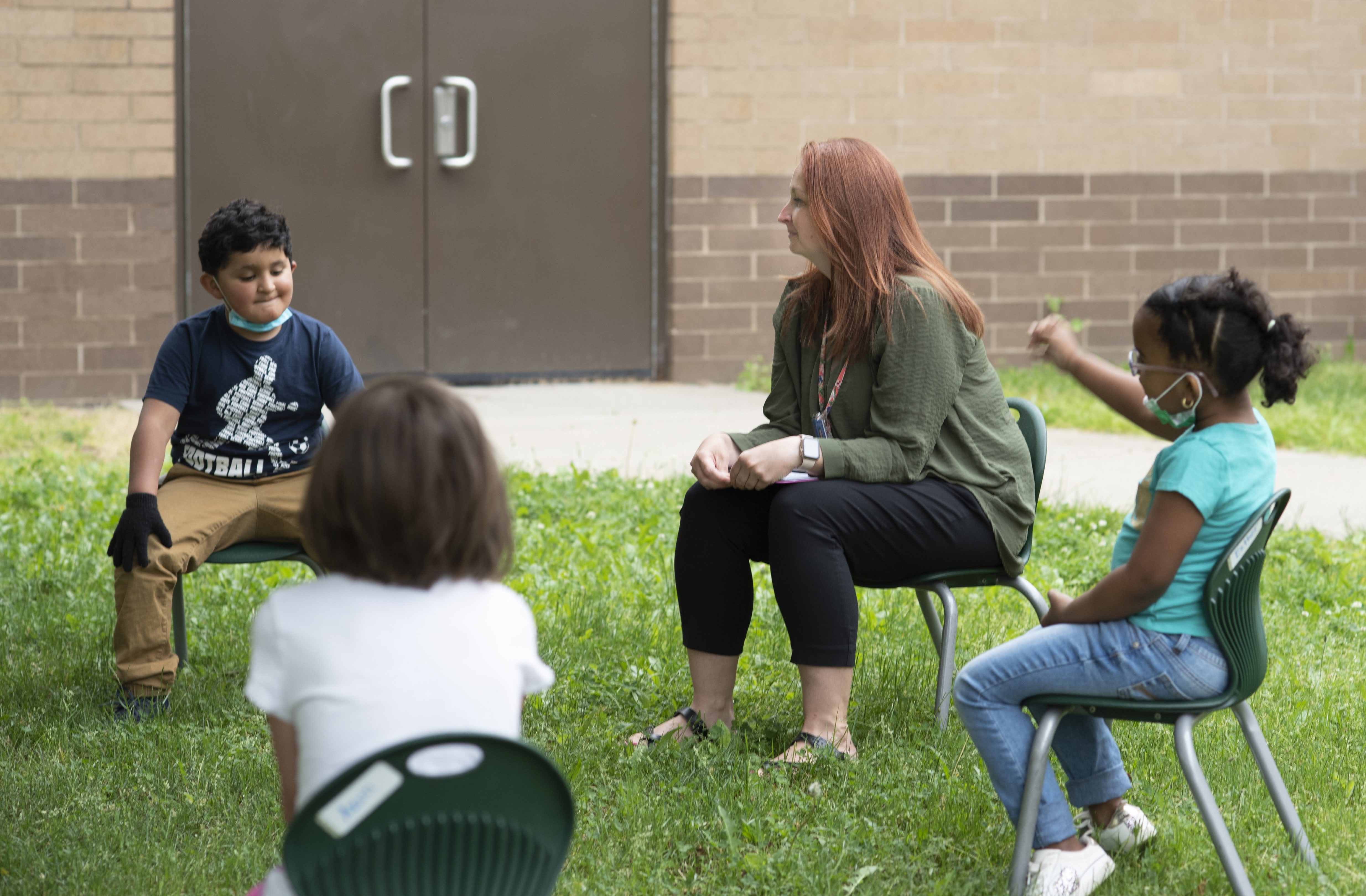
The program has built out every year, and it hasn’t stopped growing yet—more social workers and occupational therapists will be added this fall. Overall successes so far include test score improvements that removed one school from the state’s list of failing schools, and a reduction in violent incidents.
However, for the MEA members interviewed, success also looks like individual students who begin to recognize feelings and behaviors that are not beneficial and what they can do to prevent those from overtaking them and spinning out of control—students who used to get in trouble but now are empowered to do what’s needed to reset and return to learning.
The project is the brainchild of Nicole Chubb, an experienced school social worker who became the district’s special education director, with enthusiastic backing from Supt. Terry Dangerfield. That unwavering administrative support has been key to success, the three behavior team leaders agreed.
“They saw the need, and they didn’t blink,” Schankowski said.
About the Brain
We know from research that suspension as a tool to change behavior does not work, Burley said. More often than not, the same students get suspended repeatedly—and other punishments, such as taking away recess, often harm students most in need of movement and play.
Part of what gets educators across the district to buy in to making the trauma-informed shift is showing them the brain research and having honest conversations, Burley said, noting, “You can’t talk a student out of trauma.”
Toxic stress affects the hippocampus, which is connected to memory and learning capacity, and the amygdala, which experiences emotions and trips the fight, flight, or freeze mode. Decades of research have shown that traumatic events in childhood can have a lifelong effect on health and life outcomes.
Conversely, through play and movement kids can calm the amygdala and build their hippocampi, Wagner added, “meaning they’re going to be able to process information faster, and they’re going to have more storage in their brain for their memories. They’re going to retain stuff.”
In Lincoln Park, staff at the building level design tier one (whole class) and tier two (small group) interventions to address students’ academic and behavioral needs. The behavior support team generally is called in to help with tier three students—those exhibiting more serious behaviors, such as eloping the classroom or physical aggression toward others.
The team might observe a student in class, provide a detailed screening, and make recommendations for interventions to support the student both at school and at home, so students have multiple layers of support in learning to self-regulate.
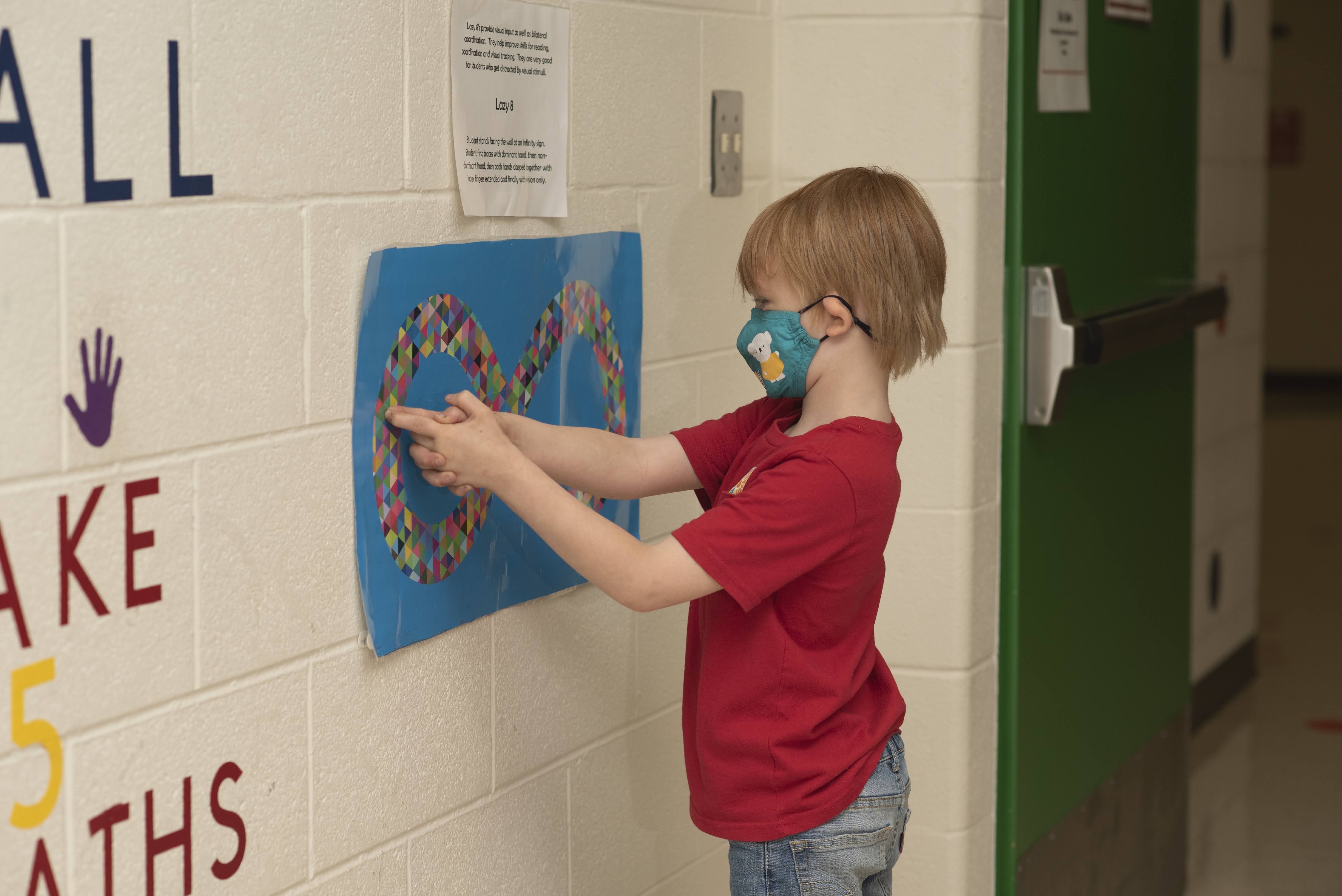
“We’re doing a lot to teach our kids about the brain so they understand what’s happening to them in terms they can understand and discuss,” Burley said.
Animal terms and color-coded emotion charts give children the language to speak about what they’re feeling, and both students and teachers offer feedback regularly to evaluate whether plans are working or need to be revised.
Brain-Body Reset
Every building in Lincoln Park every day incorporates mindfulness, a practice in which students learn breathing and relaxation techniques. “We’re trying to teach our students they have the skills within them to calm their brain and to calm their body,” Wagner said.
Part of that also involves talking about the fast-beating heart and racing mind that are the physical indications of upset, so kids start to notice what they’re feeling instead of being swept away by it. In some buildings, the principal leads a mindful moment over the intercom. In others, teachers conduct mindfulness lessons.
From the outset, the team has focused on getting a “calming corner” set up in every classroom and establishing a general-education sensory room in every building where students on a prescribed sensory “diet” of activities can learn how to counteract stress and big dark emotions, such as anger, fear, sadness, and anxiety.
Regulation stations adorn the walls of hallways throughout the district’s 11 buildings, where students can step out of a classroom with a coach and go through brain exercises. For example, in “Lazy 8,” a student’s fingers trace over an infinity sign in multiple ways to calm but also to improve coordination and visual tracking.
A centerpiece of the project for the neediest students are the sensory rooms in each building—made up of equipment such as swings, slides, soft blocks and pulleys that students can arrange, play on, move about and operate to redirect their energy away from emotions. Students must have permission and a spot on a coach’s schedule to use the sensory rooms.
“We know motor planning helps calm the body,” Wagner—the OT—said. “When kids are really elevated and firing in the amygdala, we try to do something with motor planning just to slow them down.”
The break room looks different at the high school level, with a swing and comfortable seating arranged for talking. A courtyard with garden area is another break area being added at the high school for next year.
In most districts, school sensory rooms are designed and used only by students in special education programs, such as autism classrooms or resource rooms for emotionally impaired students, Wagner said.
“Before I started, the superintendent said, ‘We want you to put a sensory room in a gen-ed building. This is not about a program, it’s about meeting kids’ needs. We know our kids are dysregulated, so please help us.’ And I was like ‘Really? Wow.’ So that’s what I get to do, and I’m really lucky.”
Restorative Practices
The Resilient Schools Project uses the circle of courage as a guide, steeped in Native American ideals that say four components make for a flourishing life: belonging, mastery, independence, and generosity, Burley said.
“We try to work those four components into the everyday classroom world,” she said, “and then when we go out to observe a student and we do an assessment, that’s one of the tools that we use. We try to determine where their circle is broken.”
On a regular basis, Lincoln Park classroom teachers conduct classroom circles with simple and fun question and answer sessions to build a sense of community and trust. The teacher acts as facilitator, and the conversations follow rules and rituals to deepen the connection and provide fertile ground for problem solving when difficulties arise.
Once trust is established, circles help students to communicate through conflict, listen to each other without interrupting, see and articulate another’s viewpoint, and take responsibility for personal actions.
“It brings this sense that everyone is even, and that’s the idea of circles—to build up each kid to where they’re all together,” said Schankowski, who is a certified trainer through the International Institute of Restorative Practices, along with Burley.
All three of the behavior team leaders agree that the reality of the Resilient Schools Project is living up to the dreams that lured them to the district. The effort is like no other in the state, they said.
“I could retire, but there’s no way I want to retire,” Wagner said. “I love what I’m doing.”
“It’s not perfect, but we’re getting there,” Burley agreed, “and we’re going to continue to see many of our students thrive who would not have thrived if we weren’t engaging in these practices with them.”


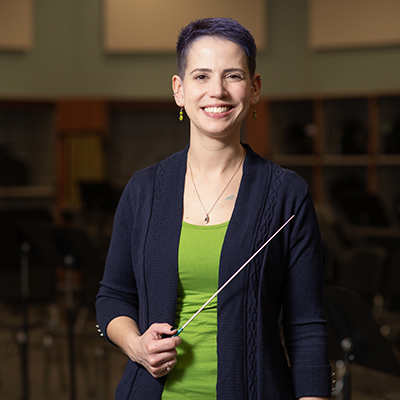
Wow! So incredibly proud of this amazing team.
Wow, wonderful work and so very needed.Love the follow thru and having all involved( esp. Home setting). I have worked in the school setting now for 20 years and am disillusioned on lasting impact OTs make in the SPED setti g. Another seasoned OT retired due to same feelings.I graduated in 1988 from Colorado State University. I have worked in various settings. I love my other PRN work of community reintegration of Neuro patients. This info came up on my FB on my first day back at school,
( with students present) . Hmm, may have to visit you all when I visit my family in MI and So. Bend, Indiana! Love your vision! Hope it inspires many more as you have inspired me!
Fantastic! I would love to learn more!!
OT
These are some of the best colleagues I will ever have! These women, along with so many other educators in Lincoln Park, are choosing to put students; needs first. They have taught me a great deal and I am excited to see what is in store for the future in our district!